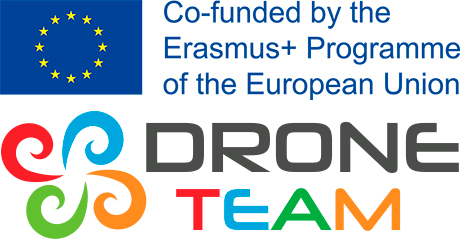The project objective is to work on the concepts of product innovation, project-based learning, multidisciplinary working relationships, improving language proficiency and knowledge of technology and trends. The aim is to generate high-quality curriculum materials that allow students to approach to the World of Work. We also want to help motivate future professionals in STEM careers. In order to achieve this a base model will be used, on which students should learn and customisation in teams. The chosen base model that will serve to achieve the project objectives will be a toy drone.
From IES La Foia we have annual meetings with local business associations to manage student practices and they convey the need not only students have technical knowledge, but also having communication skills, multidisciplinary teamwork, initiative and creativity for active participation in developing new products. Therefore, the aim of this projecct is to contribute to increase the employment rate in recent graduates, according to the report The Education and Training Monitor 2014 (prepared by the Directorate-General of Education and Culture -October 2014) is currently 75.5% and the European Objetive was 82%.
In this sense, this project aims to improve key Competencies and, based on the development of a complex toy, put together students from different disciplines and knowledge (peer learning) so that they starting with some basic requirements, are able to evolve a basic model and generate their own toy. The product to develop is a drone, because is complex and with different disciplines involved. Furthermore this course 2014-2015 in IES La Foia begins to develop new cycle (Technician in Forming by Metal and Polymer Moulding ) which requires new educational materials and increasing educational methods adapted to the environment and occupational demand.
This project was born of knowledge and complementarity of the four participating VET Schools and toy expert. In this regard the consortium is:
(1) IES La Foia (Spain). Plastic parts expert and Mechanical, 3d modelling
(2) Tehnička Škola Sisak (Croatia): Mechanical components and environmental considerations, 3d modelling
(3) Zespół Szkół Nr 10 (Poland): Open source software related to flight control. Moodle Plaftorm.
(4) Šolski Center (Slovenia): Mechatronics, testing (wind tunnel ,etc.) electronics and microcontrollers, 3d modelling.
(5) and as an expert in product development, specifically in the development of toys and knowledgeable about the World of Work: AIJU (Spain), a technology centre, that ensures with their expertise and vision that all learning materials will be closed to the business world. Quality and Dissemination.
This project is foreseen for three years: the objective of first year is to join teachers and AJU's experts in order to develop the base educational materials. During the second and third year of the project, students will perform their works. For this, multidisciplinary teams will be formed with one student from each of the schools that will work together in a customisation of their drone. The objective of the first year for students is that their drone can fly and be controlled. For the second year student teams will perform a programmed flight through waypoints. In addition, they will use additional systems like GPS, Camera and First Person View. In this sense each team will have a coacher and also a tutor. It means that the coacher is a teacher with a technical background and the tutor of the team will be an English teacher who will support them and drive their communications with other students of the same team from the others schools. English teachers of schools will prepare a specific vocabulary of each specialty to have adequate glossary for the project.
The target groups of this project are:
1) teachers from four schools VET involved, each in its defined specialty.
2) middle grade students of VET schools. With the aim of having an overview of product innovation, integration in teams with the need to communicate with other students from different countries and specialty.
The project aims to improve key competences for both students and teachers.
However, all developments will be opened and may be applied both in higher education and secondary education. The modularity of the intellectual outputs outlined in this project, will allow all stakeholders to make use of full, partial or adapted form. To ensure availability, in addition to the project website, all generated educational materials will be published under open license as Open Educational Resources (OER).




